
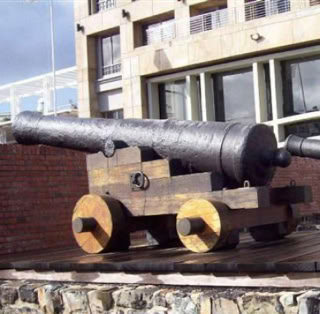
Chavonnes Battery
Completed in 1726, this battery was the first coastal defence to deter seaborne aggressors. Named after Governor Maurice Pasque de Chavonnes, it was built on the rocks at the water’s edge. It mounted 16 large cannons, which enabled its gunners to bring accurate fire to bear on any hostile ships entering the bay.The battery was partly demolished and buried in 1860 in what is now the V&A Waterfront, the oldest working harbour in South Africa. In 1999, it was excavated and conserved in a spectacular museum, the only place where you can touch the sand of the original Cape Town shoreline.
Location: V&A Waterfront Information: www.chavonnesbattery.co.za
Price: (Temporarily closed) but external exploration is still possible.

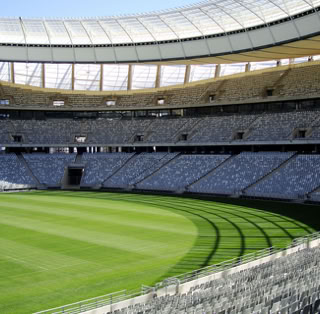
Cape Town Stadium
Cape Town Stadium hosted eight matches during the 2010 FIFA World Cup™. This included the quarter-final between Germany and Argentina,as well as the semi-final between the Netherlands and Uruguay. The stadium seats 55 000. It now hosts a variety of sporting events such as soccer and rugby, as well as international music concerts.
Location: Green Point. Tours: visit https://dhlstadium.co.za/ or
Tel: 021 430 7300 or 021 417 0101 Price: Entrance free.
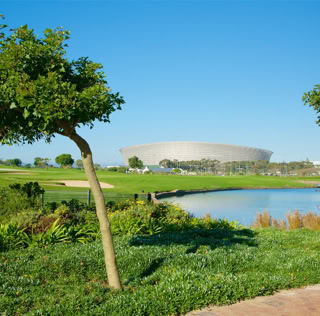

Green Point Urban Park
This area was once the site of a wheatfield experiment and was later used for grazing cattle but, it was only in 1806 when the British started racing horses here and holding yachting regattas on the vlei, that ‘Green Point Common’ came to be associated with recreation. It has also been a military encampment and, from 1899-1900, a Boer POW camp. This new park, opened in 2011, has a Biodiversity Garden designed by Marijke Hönig and a large area for recreation, suitable for all ages. It is wheelchair friendly.
Visiting Hours: 07h00–19h00 daily. Location: GreenPoint. Information: https://www.cometocapetown.com/green-point-urban-park/ Price: free

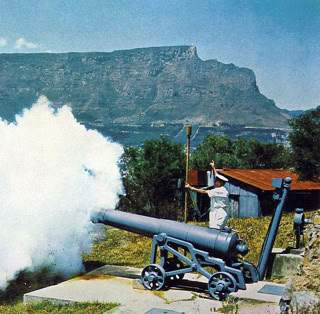
Noon Gun
The daily firing of the noon gun is Cape Town’s oldest continuing tradition, and the two guns used are the oldest guns in the world still in daily use.This practice started in 1806 as a time signal for ships at anchor; in 1902, the guns were moved to the Lion Battery on Signal Hill where they have remained ever since. The loading of the gun is undertaken by the South African navy but it is fired by the SouthAfricanAstronomical Observatory, 6.5 km away. Information: https://gunfun.co.za/noon-gun-in-cape-town/ Location: Signs from the corner of Bloem and Buitengracht Streets, heading up to Lion Battery via Military Road in the Bo-Kaap Price: fee


Fort Wynyard
This fort was built in 1795 as Kyk in de Pot Battery, as it overlooked a whaling station (at what is now Granger Bay) with its huge pots for boiling out whale blubber. It fired Table Bay’s only shots during the British invasion of 1795. After the second invasion in 1806, the guns were removed, but when the American Civil War damaged relations with Britain in 1861, it was completely rebuilt. The fort was declared a national monument in 1968 and restored to its WWII state. It includes a fascinating array of guns including a reconstructed 9.2 inch ‘disappearing gun’, one of only a few left in the world. Location: Granger Bay Blvd, Green Point Information: 021 416 6230. Price: small fee (Guided tours by appointment only.)

Signal Hill
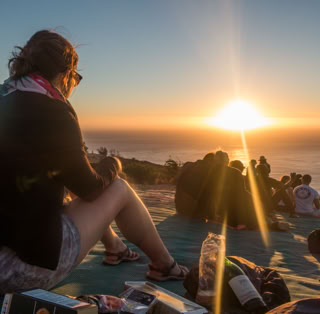
Undoubtedly one of the best viewing sites of Cape Town that can be reached by car. Its name derives from the permanent watch station that was established on its summit. The first signal station was on top of Lion’s Head in 1673 but, by 1815, the British had moved this operation to Signal Hill and the cannons were replaced by a set of signal flags and hoisted signal balls. At different stages of its history, Signal Hill was called ‘Ye Sugar Loaf’ by the British and ‘Lion’s Tail’ by the Dutch. Location: The end of Signal Hill Road, Lion’s Head Information: https://www.capetourism.com/signal-hill-cape-town/ Price: Free.

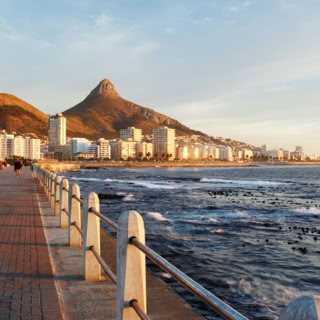
Sea Point Promenade
The first permanent residences in Sea Point date from 1739 and, by 1862, a tramline running along the water’s edge had been installed. In 1895, the line was closed, leaving an area between the sea and the buildings in a run-down state.In 1930, a sea wall was built which gave rise to a 4.5 km esplanade and lawns. The promenade has become the premier leisure and recreational spot in Cape Town for walking, jogging, cycling and picnics. Location: Sea Point. Location: https://en.wikipedia.org/wiki/Sea_Point Price: Free.

The Roundhouse
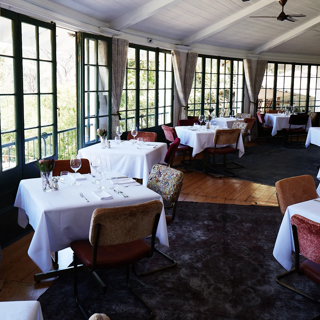
This interesting little building was built by the Dutch East India Company in 1786 as a guest lodge for its officials to get away
from town life. It was only when the extravagant Lord Charles Somerset (governor of the Cape from 1814 to 1827) used it as a hunting lodge that it gained its historical reputation. These walls must have many interesting stories to tell, from ones of leopard and lion hunting to rumours of Somerset’s secret love for Dr James Barry (she disguised herself as a man in order to practise medicine). From 1837,The Roundhouse has operated variously as a tearoom, dance hall, restaurant and boutique hotel. Today, it is run as a restaurant. This is a great place to relax after a walk in the Glen. Location: Kloof Road, The Glen, Camps Bay Information: www.theroundhouserestaurant.com Price: free to visit.
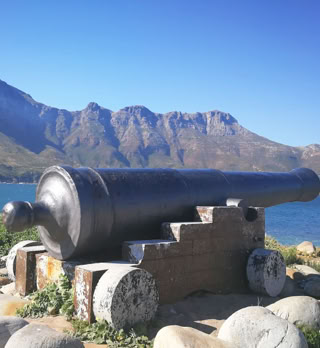

Hout Bay West Fort
This Dutch fort, established at York Point in 1781, was used in conjunction with the East Fort across the bay to make sure the enemy, namely the British, could not land at this bay as a back door to Cape Town. In its day, there were six 24-pounder and one 18-pounder Swedish cannon. These cannons have been fired only once in anger – in 1795 at a British flotilla. A day later, the Dutch surrendered the Cape to the British. During WWII, anti-aircraft guns were located on this site. Price: free Location: End of Harbour Road, Hout Bay (next to Bay Harbour Market) Information: www.sahistory.org.za/place/hout-bay-east-and-west-forts Price: free

St Joseph’s (Rubbi) Chapel
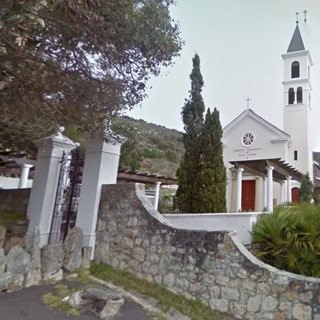
This is a story about how a church acquired a congregation. On the death of Joseph Rubbi, his grieving wife (a childhood sweetheart) had a vault in which to bury him built on this property. She did not stop there, subsequently building a chapel in his memory. The chapel found a congregation when, because of apartheid, the Group Areas Act moved ‘non-whites’ from Simon’s Town to Ocean View. Location: Rubbi Road, Kommetjie. Information: https://catholicchurchkommetjie.wordpress.com/st-josephs-parish-in-kommetjie/history-of-the-rubbi-chapel/ Price: Free.

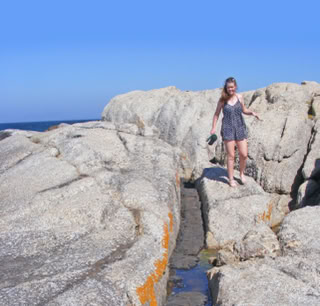
Froggy Pond Dolerite Dyke
This is one of the finest and most accessible examples of a 130-million-year-old dolerite dyke (like volcanic rock) that has intruded into the much older (540 million years) granite. Just next to this, on the sea side of the rocks, you will notice what seems like a low wall running across the rocks: this is another intrusion but, this time, made up of a slightly younger granite that pushed up through cracks. These low walls or ridges are known as aplites. Location: Froggy Pond, on the rocks between the two main beaches. Information: http://sajg.geoscienceworld.org/content/114/3-4/335 Price: Free.

Sea Point Swimming Pool
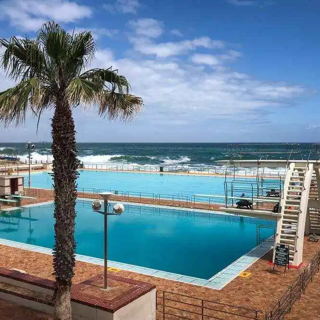
The first saltwater pool built in 1895 was washed away in a storm, but 1914 saw the opening of the famous pavilion with an
open-air cinema and restaurant. Today, it is a freshwater pool, rated as one of the top ten public swimming pools in the world.
Location: Between Hout Bay and Camps Bay. Price: Free.

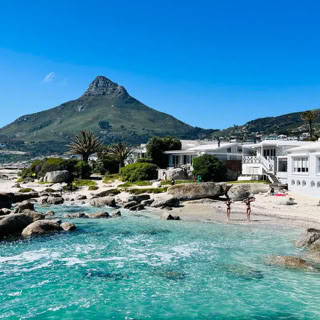
Bakoven Beach
If the crowds of Camps Bay and Clifton beaches are not your scene and you are looking for some ‘me time’, Bakoven, with its three small beaches and granite boulders,offers the quieter beachgoer a space in the sun. Bakoven was originally a British military muster point for the defence of the colony from the sea and is credited with having had permanent, occupied structures long before Camps Bay (mid-1800s), with a small fishing harbour (now an NSRI station). Information: http://bungalows.co.za/about/bakoven-clifton-glen-beach-heritage/bakoven-heritage/ Location: Bakoven, off Victoria Road Price: free.

Kakapo Shipwreck
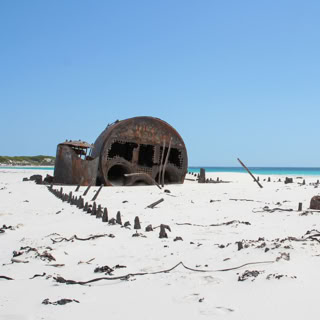
If you need an excuse to do one of the finest beach walks in the world, the Kakapo will provide it.A good 40-minute walk from the Noordhoek car park will get you there. The Cape is renowned for shipwrecks, but only a few are visible. In 1900, this ship, on its maiden voyage, sailing at full speed because the captain thought he had rounded the Cape, ran right up the beach; the people on board simply climbed overboard onto the sand and walked away. Location: 40 minutes up the beach from the Noordhoek car park Information: https://www.capetownetc.com/things-to-do-cape-town/the-tale-of-kakapo-shipwreck-in-noordhoek/ Price: Free.

Kommetjie
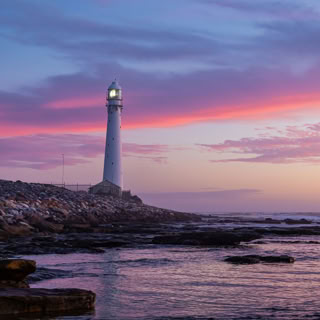
(Afrikaans for ‘small basin’) Before the first house was built here in 1903, this area was a place for picnics and holiday camping. Although the 1960s saw considerable residential development, today Kommetjie retains a rural feel and the locals fight to keep it that way. The attractions here are the basin, Slangkop Lighthouse, coastal and mountain walks and the famous Long Beach surf break. Location: From Fish Hoek, take the M65 Information: https://en.wikipedia.org/wiki/Kommetjie Price: Free.

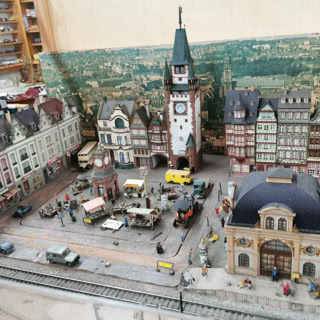
Warrior Toy Museum
This quaint little museum is the place for kids and adults who are young at heart. On permanent display are 4000 model cars, 500 dolls and teddy bears, miniature dolls houses, two fully operating railroads, lead soldiers, Meccano, ships and much more. Percy van Zyl, the curator of the museum, has created a heavenly space for collectors of toy cars, buses, aeroplanes, trucks and lead soldiers. Location: St George’s Street, Simon’s Town Tel: 021 786 1395 Price: Small entrance fee.

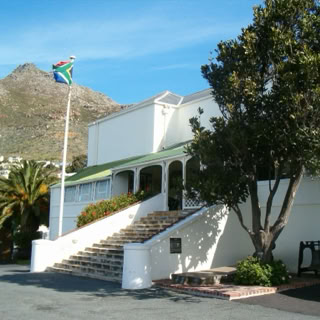
Simon’s Town Museum
This museum was established in 1977 to showcase the local history and events that have shaped Simon’sTown history from 100 000 years ago, through the colonial period until recent times. The building that houses the museum, The Residency, was built in 1777 as the winter residence for the Dutch East India Company governor at the Cape. Information: www.simonstown.com/listing/simons-town-museum/ Location: Court Road, Simonstown Hours: Monday to Friday, 10h00–16h00 Saturdays, 10h00–13h00 Price: small fee

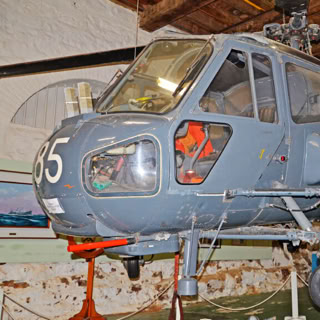
SA Naval Museum
This interesting museum is full of naval artefacts and exhibitions that tell the story of the South African navy, from vintage navigational and divers’ equipment, model ships and submarines, uniforms and medals to weaponry. The museum is housed in the historical Dockyard Magazine and Storehouse of 1743 which was enlarged in 1810 to become the three-storey building we see today. Information: https://www.simonstown.com/listing/sa-naval-museum/ Open: Daily, 09h30–15h30 except Good Friday, Christmas Day and New Year’s Day. Location: 500m from Simon’s Town train station, on the left. Price: Free


Just Nuisance’s Grave
Born in Rondebosch in 1937, Just Nuisance was a Great Dane that became the best-loved and most well-known dog in Cape Town’s history. He came to be associated with the navy at Simon’s Town, where he befriended all navy personnel, making it his duty to ride the train with the sailors and ensure they all made it back to base safely. He was officially enlisted into the Royal Navy in 1939 (which entitled him to a free train pass). During the war years, he helped boost the morale of the war-weary sailors. He died at age seven and was buried with full military honours. Information: https://www.simonstown.com/just-nuisance/ Location: Drive up Red Hill, turn left into the Naval Signal School. Price: Free.

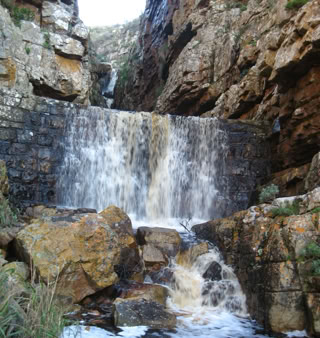
Admiral’s Kloof
High up in the gorge above Simon’s Town is one of the best short walks on the Cape Peninsula:15 to 20 minutes of easy
walking will get you from your car to the end of the kloof. The highlights are spectacular views, two waterfalls, a dam from yesteryear and one of the best examples of a 200-300 million-year-old thrust fault (seen across the valley on the opposite rock face). Information: https://www.capetownetc.com/things-to-do-cape-town/the-admirals-waterfall-in-simons-town-is-a-must-for-nature-lovers/ Location: end of Barnard Street, Admiral’s Kloof, Simon’s Town Price: Free

Glencairn Beach
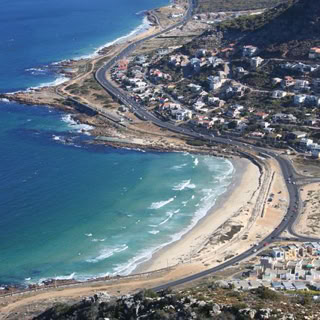
This beautiful little beach is often overlooked, which is a good thing for those who like their space. There is a tidal pool for the little ones and it is one of the best spots for whale-watching in season. It was on this beach in 1968 that a coloured man, 24-year-old Clive Haupt, collapsed: his heart was used (in the third
heart transplant in the world) for a white recipient which caused much
consternation in the then apartheid South Africa. Behind this beach, on
the other side of the road, a walk around the vlei on well-marked paths
will reveal abundant bird life. Location: Between Fish Hoek and Simon’s Town on the M4 Information: https://www.worldbeachguide.com/south-africa/glencairn-beach.htm Price: Free.

Clovelly Wetland
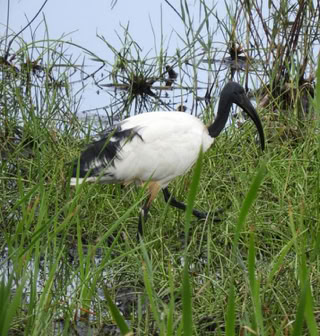
Just upstream from the Clovelly corner, there was once an alien-infested flood plain that has been turned into an ecological and recreational gem, with paths, walkways, ponds, Sand Fynbos and lots of birds.The Silvermine River, which runs through this rehabilitated area, is the most pristine river within metropolitan Cape Town. There is a self-guided Blind Trail and cycling is allowed. Location: Corner of Clovelly and Main Roads, Fish Hoek. Information: https://www.fynboslife.com/nature-reserves/lower-silvermine-wetlands/ Price: Free.

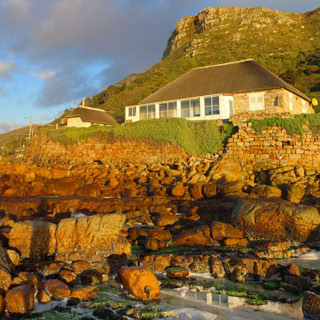
Bailey’s Cottage
This little cottage, found on the Muizenberg Historical Mile, was once the fishing cottage of Sir Abraham (‘Abe’) Bailey, one of the world’s wealthiest men, a politician, mining magnate and legislator in the early 1900s. The humble abode was designed by the renowned architect, Sir Herbert Baker, and built in the 1920s using the foundations of a fort from the early 1800s. During WWII, the house was used by the Royal Navy and remained in its possession till 1999 as Bailey did not own the land (It is still state-owned). Information: https://mymuizenberg.co.za/baileys-cottage-history/ Location: 500 m from Muizenberg Station, M4 Price: Free to view from outside.

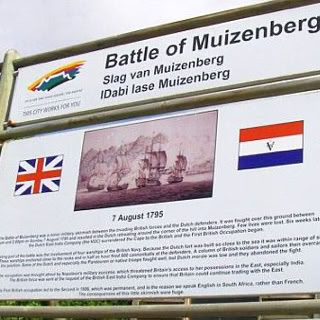
Battle of Muizenberg Fort
It may seem a little far-fetched to call this a fort, but this open stretch of lawn above an embankment is where the Dutch (who had ruled the Cape since 1652) made a stand against the invading British forces in 1795. The outcome of a short battle lasting a mere 30 minutes was the loss to the Dutch of their important replenishing station on the sea-route to the East, putting the final nail in the coffin of the Dutch East India Company, one of the greatest companies on earth at the time. Location: Just above Bailey’s Cottage, on the hillside next to the road. Information: https://www.capepointroute.co.za/moreinfoOther.php?aID=534 Price: free.

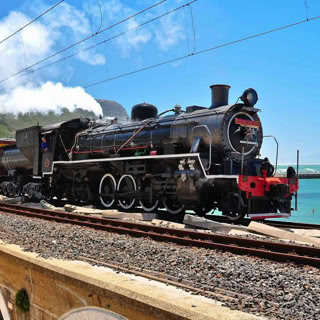
Muizenberg to Sunny Cove Train
This is the most scenic part of the train line from Cape Town to Simon’s Town.The short ride runs along the water’s edge with uninterrupted views of the sea. Each station has something to see and visit. (If the line is open, continue to Simon’sTown.) Location: Between Muizenberg and Sunny Cove. Information: https://www.ceresrail.co.za/destinations-simonstown/ Price: Train fee.

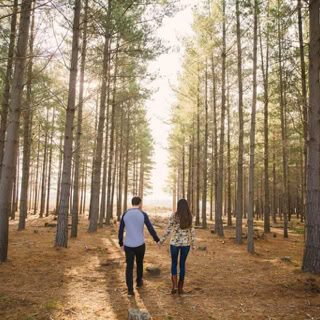
Tokai Forest
By the end of the 1800s, most of the indigenous forests of the Cape had been depleted, which forced the government to establish the first plantation at Worcester in 1876, followed by the Tokai plantation in 1893. The worldwide shortage of wood during WWI saw the first export of commercial timber (from Tokai) with substantial profits: so began South Africa’s international timber industry. Since 2005, sections of the forest have been returned to Cape Flats Sand Plain Fynbos. Today, Tokai remains a popular area for walkers, dogs, bikers and horse riders. Location: Orpen Road (M42) Tokai Information: https://en.wikipedia.org/wiki/Tokai_Park Price: free.

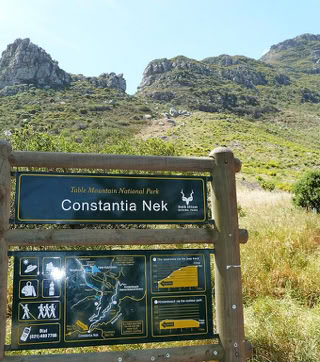
Constantia Nek
Between Hout Bay and the Constantia Valley is a 212 m high pass called Clooff Pass by Jan van Riebeeck when he crossed it in 1657. It saw its first use as a defensive position in 1659 against marauding Khoi. By 1679, a road for transporting timber from Hout Bay was well established and, in1781, the French built a small fort in anticipation of a British attack. Today, this is the gateway to some great outdoor walks such as Vlakkenberg, the Bridle Path and the contour path to Kirstenbosch. Constantia Nek is home to the longest running restaurant location in Cape Town. Location: Between Hout Bay and Constantia Information: https://en.wikipedia.org/wiki/Constantia_Nek Price: Free.

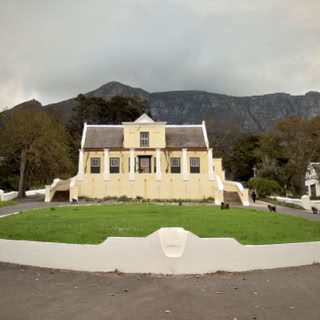
Tokai Manor House
This farm, once part of Simon van der Stel’s vast estate, was used for grazing cattle and sheep. In 1792, its new owner named it Tokai after his home region in Hungary and he planted vineyards. By 1796, the homestead, designed by the famous architect, Louis Michel Thibault, had been built. The most well-known story (1802) associated with this homestead is that of the ghosts of a horse and rider who were both killed while descending the steep steps. Location: top of Tokai Road, Tokai. Information: https://www.sahistory.org.za/place/tokai-manor-house-tokai-road-tokai Visit: can be viewed from the gate.
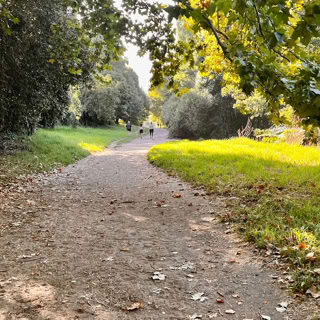

Alphen Green Belt
This is one of nine beautiful walking trails in Constantia and is shared by walkers, dogs, trail bikes and horses. These trails – developed on land that could not be built on – run alongside rivers and marshy areas. The Alphen Trail is named after the historic farm next to it and is one of the best to start on if you haven’t walked any of the green belts before. Location: beginning of Alphen Drive next to the Alphen Boutique Hotel, Constantia.
Information: https://www.sa-venues.com/things-to-do/westerncape/the-alphen-trail/ Price: free

Buitenverwachting
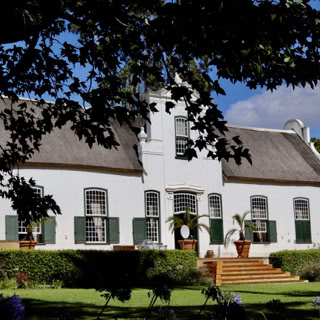
(‘Beyond expectation’)This is a beautiful wine farm, with the house being completed in 1796.The farm was once part of Bergvliet farm which, in turn, was part of (Groot) Constantia. It was also owned, at one stage, by a Cloete, who had invested a great deal of money in slaves and lost his farm when, a few years later, slavery was abolished.This farm has undergone changes of fortune and had many owners, notably the Lategan family. The farm and restaurant are well worth a visit. Location: Klein Constantia Road, Constantia Information: www.buitenverwachting.com Price: Free to visit.


Chelsea Village (Old Wynberg)
After the British victory at the Battle of Muizenberg (1795), it was decided that the hill at Wynberg was the best strategic position to guard the back door to Cape Town; thus, a small military village developed, followed by tradespeople moving in and other commercial enterprises beginning (1810-1840). In the 1950s, the run-down village went through a period of restoration, driven by some artists. The best way to appreciate its streets and alleyways is on foot, viewing the largest surviving concentration of traditional Cape thatched vernacular cottages in Cape Town, enjoying the small shops and ending it off in one of the local pubs or restaurants. Information: http://www.oldwynbergvillagesociety.org/history Location: Wynberg Price: free

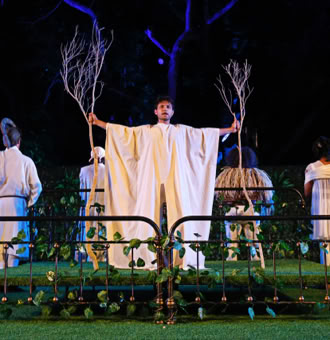
Maynardville Open-Air Theatre
Shakespeare or ballet under the stars – what more would a culture-lover want? Since the mid 1950s, when Cecilia Sonnenberg and RenéAhrenson had the bold, brave idea to establish an open-air theatre in Wynberg, many generations of Capetonians have enjoyed a pre-show picnic in its wooded park and then been entertained with a show in this unique setting.
Location: Maynardville Park, Piers Road, Wynberg
Information: https://www.facebook.com/maynardvilleopenairtheatre/ Price: Fee

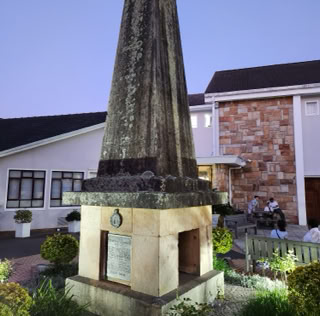
The Herschel Obelisk
John, the son of Sir William Herschel (who discovered the planet Uranus), is as famous for his contribution to astronomy as his father. His major contribution was the mapping of the southern skies from 1834-1838, which added more than 3800 celestial bodies and objects to the map. It was here, on the site of the obelisk, that he used his 20 ft telescope. He is credited with coining the words ‘photography’,‘negative’ and ‘positive’. Information: http://assa.saao.ac.za/sections/history/astronomers/j-f-w-herschel/ Access: Contact The Grove Primary School for access.Tel: 021 674 2077 Price: Free.
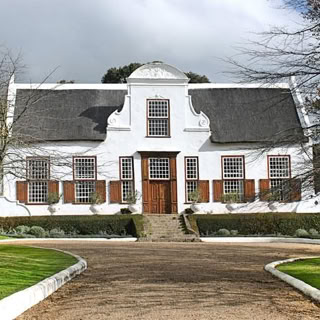

Stellenberg
This is the private home of Andrew and Sandy Ovenstone but it is open by appointment to the public to enable them to enjoy the most beautiful Cape Dutch homestead with an enchanting garden to match.This property was once part of the original farms on the southern side of Table Mountain going back to Simon van der Stel’s time (1697). Previous owners have helped write its history, from Van der Stel’s son to a successful freed slave woman. Location: 30 Oak Avenue, Kenilworth Information: https://www.stellenberggardens.co.za/the-history/ Contact: 021 761 2948 or stellenberggardens@ovenstones.co.za Price: Fee.

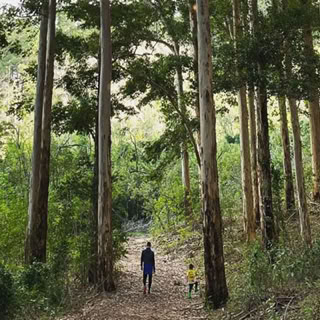
Newlands Forest
The eastern slope of Table Mountain, with its richly fed streams and relatively wind-free location, provides the perfect position for this stunning forest, with a combination of indigenous Afromontane vegetation and later plantations.Within six years of the arrival of the Dutch, Van Riebeeck had to forbid further tree-felling, and the woodcutters moved their activities to Hout Bay, Retreat and up the east coast. On a hot summer’s day there is no better place to walk, and you can even explore the ruins of Paradise, Lady Anne Barnard’s country home. Location: Newlands M3. Information: https://www.cityofcapetown.info/newlands-forest Price: free.
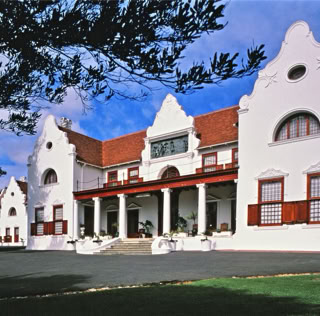

Groote Schuur Estate
The ‘Big Barn’ was built in 1667, originally to serve as the VOC’s granary. The dilapidated estate was bought by Cecil John Rhodes in 1893,after which, architect, Sir Herbert Baker, carried out a major conversion in his very distinctive style. The garden was open to the public every weekend during Rhodes’ life. Rhodes, who died in 1902, bequeathed the house to the nation as a residence for the Prime Minister and the rest of his estate to the people to be used as a park. Location: Klipper Road, Rondebosch Tours: by appointment only • 083 414 7961 Information: https://www.sa-venues.com/things-to-do/westerncape/groote-schuur-estate/ Price: Small fee.

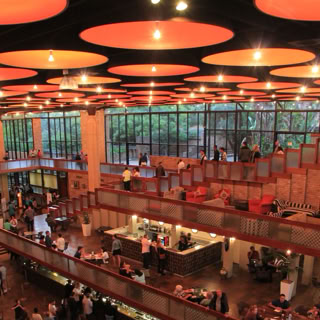
Baxter Theatre Centre
This complex, opened in 1977, was established as a result of a bequest by Dr W Duncan Baxter to the University of Cape Town for the purpose of starting a theatre. Its objective was (and still is) to ‘develop and cultivate the arts’, which it does through productions of music, drama, ballet, opera, comedy and intimate theatre. The building houses a number of venues and has won critical acclaim for its architect, Jack Barnett. Location: Main Road, Rondebosch. Tel: 021 685 7880 Information: https://baxter.uct.ac.za/ Price: Free to visit.

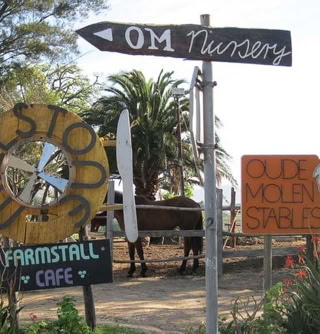
In 1657, land along the edges of the Liesbeek River was granted to European settlers by the VOC. Oude Molen started as a mill (the first windmill in South Africa) for the wheat fields surrounding it. This rustic farm once housed the captured king of the Zulus in 1881, where he was visited by British princes. Chief Langalibalele of the amaHlubi (Langa township is named after him) also spent some time here as a released prisoner. Today,in a rural, rustic setting, one can ride horses, have a bite to eat, buy from the farm-stall and visit 70-odd creative small businesses. Location: Oude Molen Eco Village, Alexandra Road, Pinelands Information: www.oudemolenecovillage.co.za/ Price: Free.
Oude Molen
Eco Village

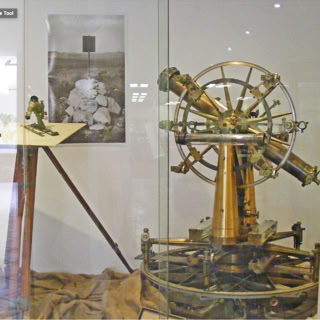
Mowbray Mapping Museum
This little-known museum is housed in the Department of Rural Development and Land Reform building in upper Mowbray. A section of the working office houses a great display of early mapping equipment, engraving stones for printing maps and historical diaries of the who’s who of the early Cape Colony mapmakers and surveyors. Location: Groote Schuur Hospital, Main Road, Observatory Book a visit: email ngi@dalrrd.gov.za Information: https://ngi.dalrrd.gov.za/index.php/home/history Price: Free

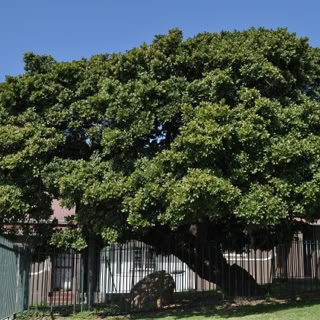
Treaty Tree
This 500 year old tree, which is hardly ever visited, should be the most famous tree in South Africa because, under these Milkwood branches, the Batavian Republic signed the treaty of surrender on 10 January 1806 with the British for their victory at the Battle of Blaauwberg, which had taken place a day earlier, thus changing the course of South African history forever. Location: Off Albert Road, corner of Treaty Road and Spring Street, Woodstock. Information: https://ilovewoodstock.co.za/2011/11/the-woodstock-treaty-house-and-tree/ Price: Free.

Long March to Freedom
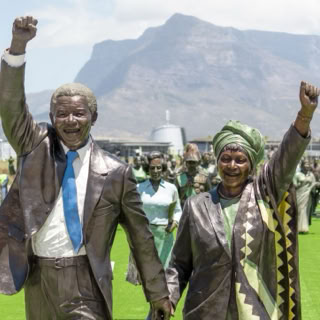
Walk among the greats in this incredible procession of 100 life- size bronze statues, the only exhibition of its kind in the world. Uncover the story of South Africa’s 350-year journey to democracy, told through the lives of the individuals so skillfully represented. Some are well known – Nelson Mandela, Archbishop Tutu, King Shaka to name but a few – but most you will meet for the first time. Absorb it on your own or take a guided tour; it’s a powerful experience that will leave you amazed and moved by the resilience and bravery of those depicted. It’s a must see South African attraction – don’t miss it. Location: Century Boulevard, Century City Information: www.longmarchtofreedom.co.za Hours: Tuesday to Sunday& Public Holidays 10:00am to 16:30pm. Price: Small fee.
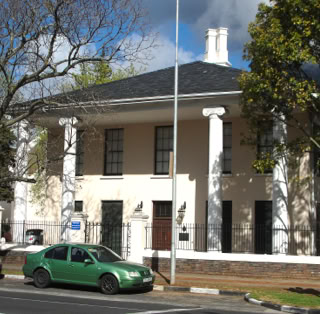

Rustenburg House
In 1657, Jan van Riebeeck granted land along the Liesbeek River to nine free burghers. He also granted himself a piece of land on which he built a house that later became known as Rustenburg. This was used as a guest house for visiting officials and was the preferred residence for many of the governors and commanders at the Cape. In 1795, the treaty in which the Dutch surrendered the Cape to the British was signed here. In 1894, it became Rustenburg School for Girls. Location: Main Rd, Rondebosch Information: https://www.sahistory.org.za/place/rustenburg-house-together-its-summer-house-main-road-rondebosch Price: free to view from the outside.

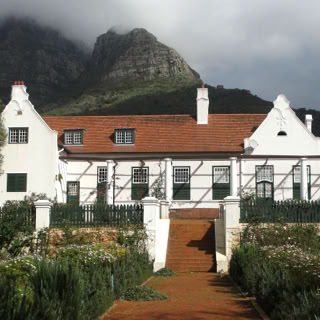
Welgelegen
There is nothing stopping you from exploring the grounds of this historical building, but the house is used as an administrative office by the University of CapeTown, so entry inside is restricted. It stands on land that was granted as one of the first farms here in 1657. The house was built during the 1700s but, when Cecil John Rhodes acquired it in 1901, it was altered by Sir Herbert Baker, resulting in his distinctive Cape Dutch style. Location: Rhodes Avenue, Mowbray Information: https://www.sahistory.org.za/place/welgelegen-homestead-next-mosterts-mill Price: Free.


Irma Stern Museum
This is a celebration of the zestful life and works of one of South Africa’s most celebrated artists. What makes this dedication unusual is that her paintings, sculptures, ceramics and artefacts are displayed at her home in a relaxed and domestic setting.
Location: UCT Irma Stern Museum, Cecil Road, Rosebank Hours: Wed-Fri 10:00am - 17:00pm • Sat 10:00am to 14:00pm. Information: www.irmasternmuseum.co.za Price: Small fee.

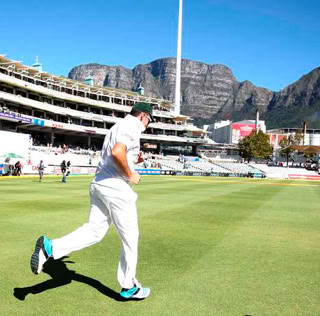
Sahara Park Newlands
Newlands is regarded as one of the most beautiful cricket grounds in the world with Table Mountain as a spectacular backdrop.The first recorded cricket match in Africa took place in Cape Town in 1808 between British army officers. This cricket oval opened in 1888 after the land had been leased from a brewer’s daughter who had acquired it as a wedding gift. 1902 saw the planting of the famous oaks on the Campground Road side. In 2003, the Cricket World Cup opening match was hosted here. Location: 146 Campground Road, Newlands. To book a tour: https://newlandscricket.com/visiting-tours/ Price: Small fee.

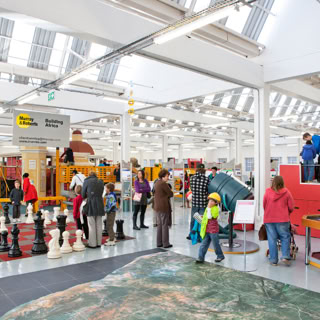
Cape Town Science Centre
This centre provides a world of discovery under one roof, which can keep kids and adults entertained for hours, as well as stimulate grey matter. There is a wide variety of interactive displays and activities, from building a house in the exclusive ‘kids only’ Murray & Roberts building site (sorry adults), to challenging your mind with puzzling mindbenders, to experiencing weightlessness with a spin on the Human Gyroscope, to playing Mindball—the game where you control the ball with your brainwaves—to seeing and hearing science in the Audio Kinetic Sculpture. One of the highlights is a life-size replica of Mark Shuttleworth’s Soyuz space capsule. Information: www.ctsc.org.za Location: 370B Main Road, Observatory Price: Free

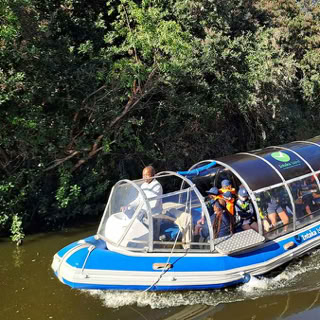
Intaka Island
Right in the middle of Century City is a 16-hectare wetland and bird sanctuary where a 2 km trail has been laid out for self and guided walks.This wetland is home to over 120 species of birds and has abundant plant and insect life. For those who do not want to do any walking, a tranquil ferry ride on the Grand Canal and around Intaka Island is worth doing. Location: Century City on the N1 Information: www.intaka.co.za Hours: Monday to Saturday: 08:00am to 19:00pm Price: small fee
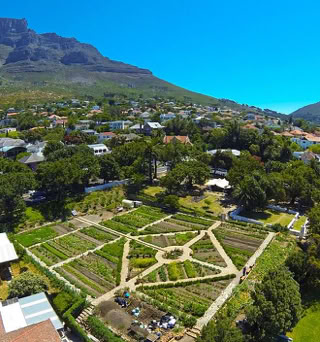

Oranjezicht City Farm
The original farm was established in 1708 and was called Oranjezicht because it faced the Castle’s Oranje Bastion. The van Breda family owned it for two centuries and became a major supplier to the castle. Over time, the farm was cut up into even smaller pieces and, by the 1960s, the plot of land, which is now a beautiful urban garden, was a rundown bowling green. Today, this small urban farm is a non-profit project celebrating local food, culture and community and reminds us of the once market gardens of the City Bowl. Location: Corner of Sidmouth Avenue and Upper Orange Street, Oranjezicht. Information: www.ozcf.co.za/ Hours: Monday to Saturday, 08h00 to 16h00 • Saturdays, 08h00 to 13h00 Price: Free to visit.

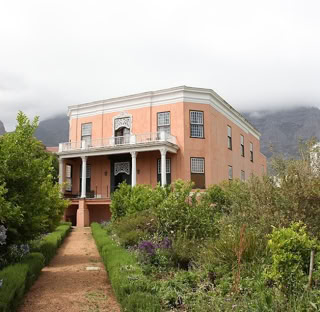
Iziko Rust en Vreugd
This house, which was once on the edge of town, reflects a prosperous late-1800s dwelling, when the Cape was still under Dutch rule. Rust en Vreugd was built in 1778 as a residence for the Dutch East India Company’s (VOC) Cape fiscal, Willem Cornelis Boers.This dwelling houses the William Fehr Collection of pictorial Africana, which is a collection comprising superb watercolours, etchings and lithographs. Location: 78 Buitenkant Street, Cape Town. Information: www.iziko.org.za/museums/rust-en-vreugd/ Hours: Open Thurs & Fri 09:00am to 16:00pm Price: Small fee.
Having tea at the Nelly is considered an institution of the highest order, which you can book (3 times a day) even if you are not staying there.The Nelly is named after Table Mountain and Lord Horatio Nelson. The hotel opened in 1899. During the Second Boer War, the British used it as their headquarters, which saw a young war correspondent based here - Winston Churchill. Location: 76 Orange Street, Gardens (at the top of the Company Garden) Information: www.belmond.com/hotels/africa/south-africa/cape-town/belmond-mount-nelson-hotel/afternoon-tea Price: Fee.

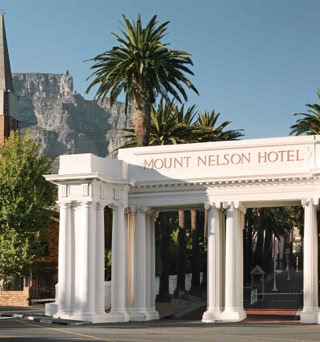
Mount Nelson Hotel

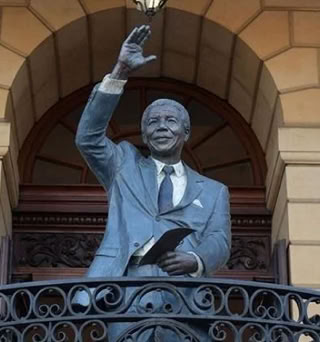
City Hall Nelson Mandela Exhibition
Cape Town City Hall presents a permanent exhibition detailing the legacy of late President Nelson Mandela. The
museum-like exhibition includes a timeline of Mandela’s early days, his resistance to apartheid, his time on Robben Island along with other struggle veterans as well as his release on 11 February 1990 and subsequent speech delivered on the balcony of City Hall. Location: Cape Town City Hall. Information: Tel: +27 86 010 3089 Hours: Tuesdays to Friday 10h00 to 16h00. Price: Free.

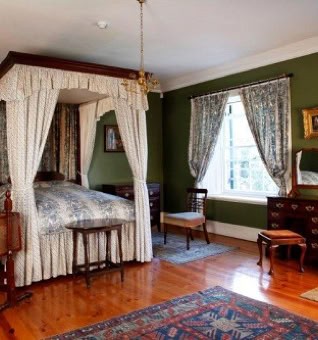
Iziko Bertram House
This house, situated at the top of Government Avenue, is the only remaining example of the English Georgian-style red brick houses that were once common in Cape Town. It was built in 1839 by an English immigrant and notary, John Barker, who named it in memory of his first wife, Ann Bertram Findlay. Everything within this house, from furniture to appliances, reflects the lifestyle of a prosperous, early 19th century English family. Location: Hiddingh Campus, Orange Street, Cape Town. Information: www.iziko.org.za/museums/bertram-house. Hours: Open daily, except Sundays. Price: small fee.

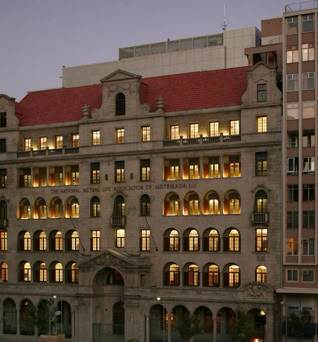
This world-class museum houses things, things that people used on a daily basis and items that made their lives work. These items vary from indigenous cultural material from southern Africa, artefacts from the colonial period at the Cape, including maritime and historical archaeology, as well as collections of world ceramics, furniture, coins, textiles and more. Location: 17 Church Square, Cape Town. Information: www.iziko.org.za/museums/social-history-centre. Hours: Monday to Friday, 10h00 to 17h00. Price: small fee
Iziko Social History Centre

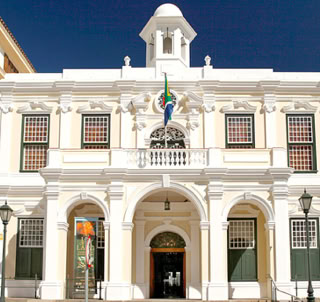
Iziko Old Town House
This former City Hall was built in the Cape Rococo style in 1755. It remains the place from where all distances to and from Cape Town are measured. Today, its main attraction is the Michaelis Collection, consisting of a world-renowned selection of Netherlandish art from the 17th century Golden Age. It is also used for music concerts, lectures and temporary exhibitions. Location: Greenmarket Square, Cape Town. Information: https://www.iziko.org.za/museums/old-town-house/ Hours: Monday to Saturday, 10h00 to 17h00 Price: Small fee.

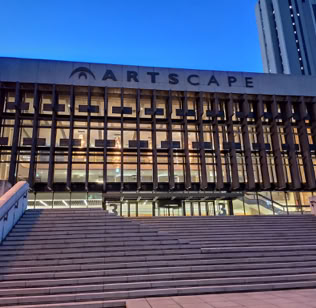
Artscape Theatre Centre
This is Cape Town’s premier performing arts centre. Before 2001, this centre was known as the Nico Malan Theatre Centre, named after a former National Party administrator of the Cape Province and was run by CAPAB (Cape Performing Arts Board). The centre was commissioned by the Provincial Administration of the Cape Province and was opened in 1971. Today, it is run as a private institution, offering the public the highest level of performing arts. Location: Between Shortmarket and Longmarket Streets
Information: http://www.artscape.co.za/history. Price: Free to visit.

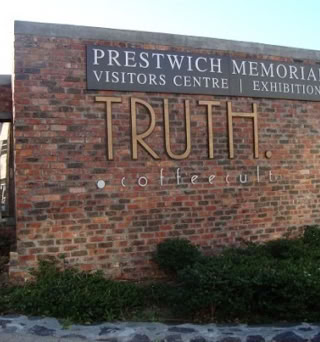
Prestwich Memorial
Everyone knows about District 6 but few know the story of District 1. This memorial came to be after a building development preceding the 2010 Soccer World Cup was stopped in its tracks when burial sites were unearthed, which caused a chain of events resulting in a Visitors’ Centre. It houses over 2 500 boxes inside the ossuary, as well as information about the area, its dark days and forced removals of non-whites during the 60s (visit Truth Coffee Shop). Location: Corner of Somerset and Buitengracht Streets, Cape Town. Information: https://www.sahistory.org.za/place/prestwich-memorial-and-garden Price: free

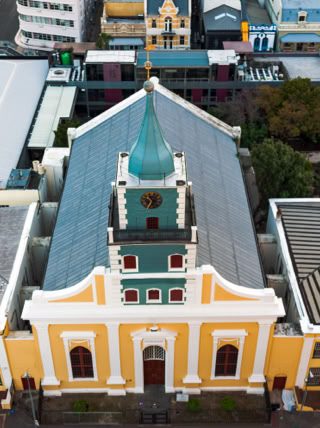
Lutheran Church
For more than 100 years, the VOC had a one-faith policy and that was the Dutch Reformed Church but, with the influx of many Germans and Scandinavians who were Lutheran, this caused a problem. In 1774, Martin Melck, a wealthy resident of Zeestraat, built a church, which was disguised as a warehouse. With this open secret, five years later, theVOC allowed the faith to practice in the Cape.With this new freedom, the barn started to resemble a church with a pulpit and choir stalls which were added by the renowned sculptor, Anton Anreith. In 1818, the clock tower was added. Information: https://safrika.org/Articles/Strand%20Street%20History.html Location: 98 Strand Street, Cape Town City Centre. Price: Free.

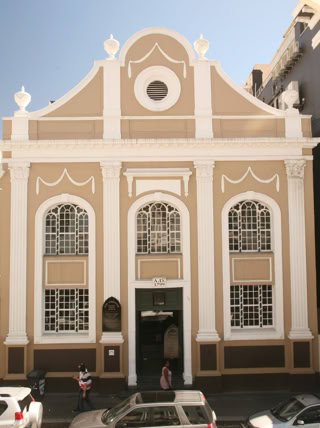
SA Sendinggestig Museum
The Suid-Afrikaanse Sendinggestig Museum (South African Missionary Museum) is housed in an old slave chapel built by the South African Missionary Society in 1804. The restored building exhibits details of the early Christian missionaries in the Western Cape. It is part of the UNESCO Slave Route. If you are planning a tour or visiting any mission station in the Western Cape, this is the place to start. Concerts, book launches and talks take place here. Information: Phone: 021 423 6755 Location: 40 Long Street, Central Cape Town. Hours: 9am-4pm; Sat: 9am-12pm Price: Small fee.
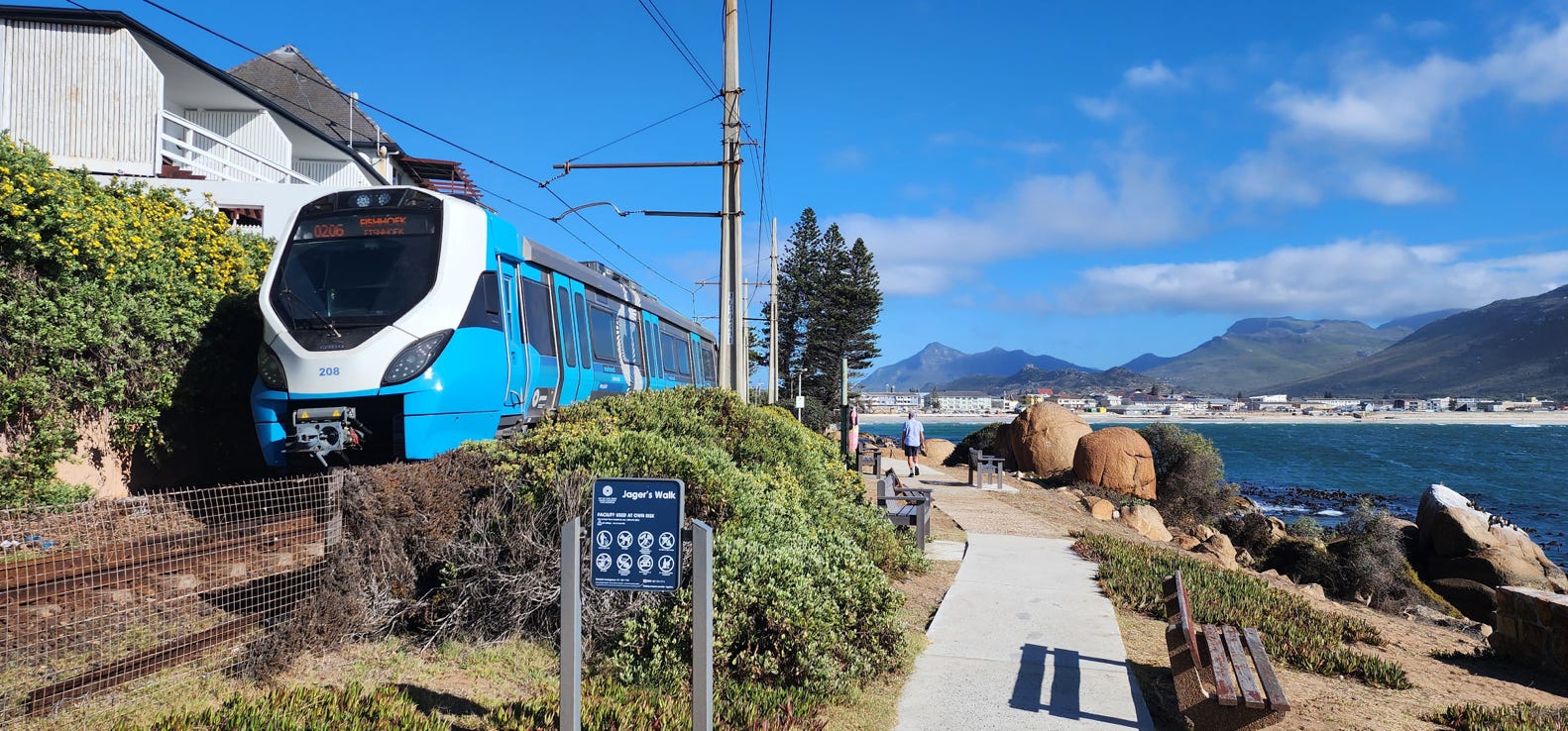

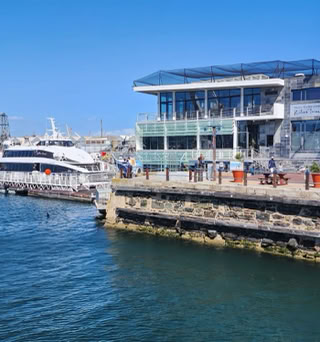
Nelson Mandela Gateway to Robben Island
This is the ticket and departure point for visitors to Robben Island but,if you are not lucky enough to go to the island,a visit to this building may serve to ease your loss.With an exhibition area, auditorium and a museum focusing on depictions of Robben Island’s history and the political struggle to overthrow apartheid, it’s worth a visit.When Robben Island was still a prison, the departure point to the island was a small building on Jetty 1 at the V&A (a small museum today). The Gateway Building was designed by Quinton Pop and Nicholas Hare Architects, and was built in 2001 on the site of the well-loved Bertie’s Landing (Bertie Reed, a legendary South African sailor), one of the first pubs that was operating out of the old harbour in the early 1990s, when the V&A Waterfront was just starting out. Information: www.robben-island.org.za Location: Piazza Level, Clock Tower Precinct,V&A Waterfront Price: Free.

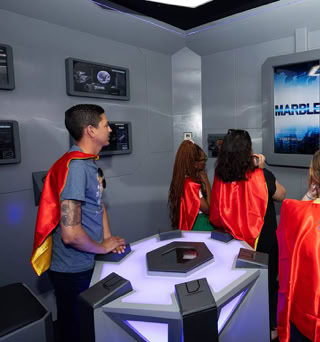
HintHunt Africa
HintHunt Africa offers exciting Escape Room adventures where teams solve clues to escape before time runs out. With teamwork, creativity, and problem-solving, the experience is immersive and engaging. Also available is the Amazing Race, where teams explore the iconic V&A Waterfront, racing through its top attractions. Perfect for friends, families, and teams. Book your award-winning adventure today! Information: Visit www.hinthunt.co.za for details. Location: 17 Dock Road, The Watershed, V&A Waterfront. Hours & Price: Hours and prices vary by season and experience.
Note
This guide is intended, partly, to introduce visitors to known and some lesser-known places that may not be specifically geared for the tourist market: some may be relatively unsophisticated; some may be viewed only from the outside.These have, however, been included as they represent the wide variety of attractions that Cape Town has to offer, especially those that have interesting stories or are of historical significance.All information is given in good faith but, as times and facilities may change, the author and publisher cannot be held responsible for any inaccuracies.
Proofreading: Shelley Woode-Smith • Citations available on request
© Richard Smith • Gateway Guides Edition 4 • 2024
© Richard Smith
Citations available on request.
Richard Smith. 083 260 2985. richard@gatewayguides.co.za. www.gatewayguides.co.za www.historicaltimelines.co.za
© Richard Smith • Gateway Guides • 2023. Distribution: GoSeeDo • Printing: FA Print
